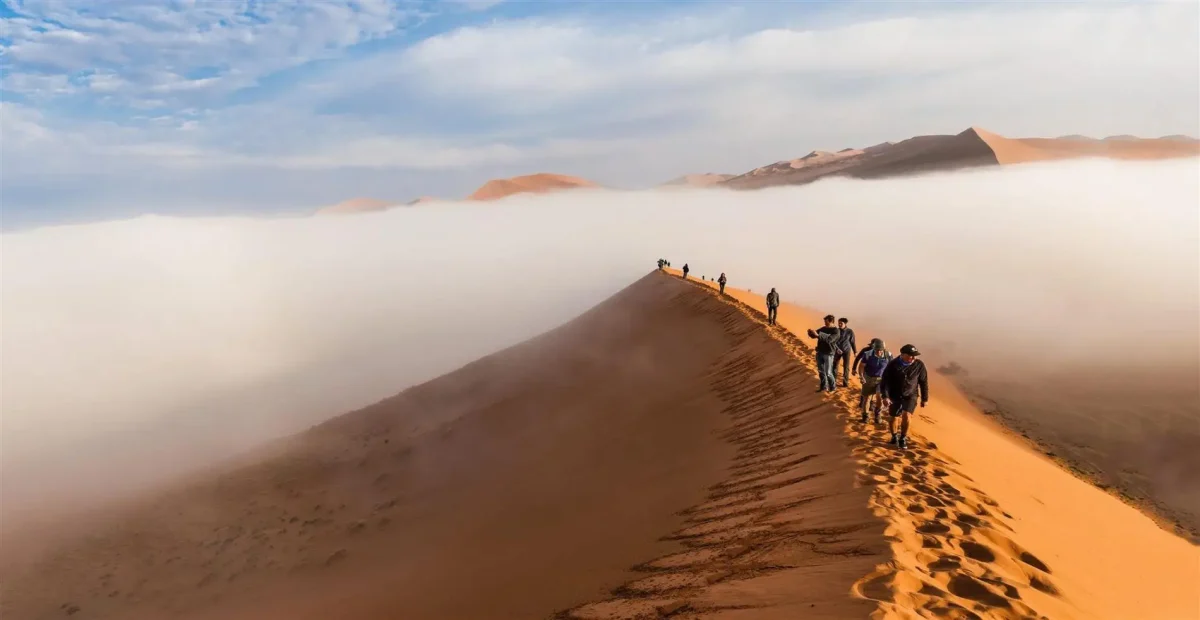Namibia, located in southwestern Africa, is a country of remarkable landscapes, rich wildlife, and a vibrant cultural heritage. From towering dunes to vast national parks teeming with wildlife, Namibia offers a diverse range of experiences for adventurous travelers. In this comprehensive guide, we will take you through the top 14 things to do in Namibia, from exploring the red dunes of Sossusvlei to meeting the Himba community in northern Namibia.
Whether you are a nature lover, wildlife enthusiast, or cultural explorer, Namibia has something for everyone. So, pack your bags and get ready for an unforgettable journey through this beautiful country. Namibia, located in southwestern Africa, is a country of remarkable landscapes, rich wildlife, and a vibrant cultural heritage. From towering dunes to vast national parks teeming with wildlife, Namibia offers a diverse range of experiences for adventurous travelers.
In this comprehensive guide, we will take you through the top 14 things to do in Namibia, from exploring the red dunes of Sossusvlei to meeting the Himba community in northern Namibia. Whether you are a nature lover, wildlife enthusiast, or cultural explorer, Namibia has something for everyone. So, pack your bags and get ready for an unforgettable journey through this beautiful country.
1. Climbing the highest dune in Sossusvlei
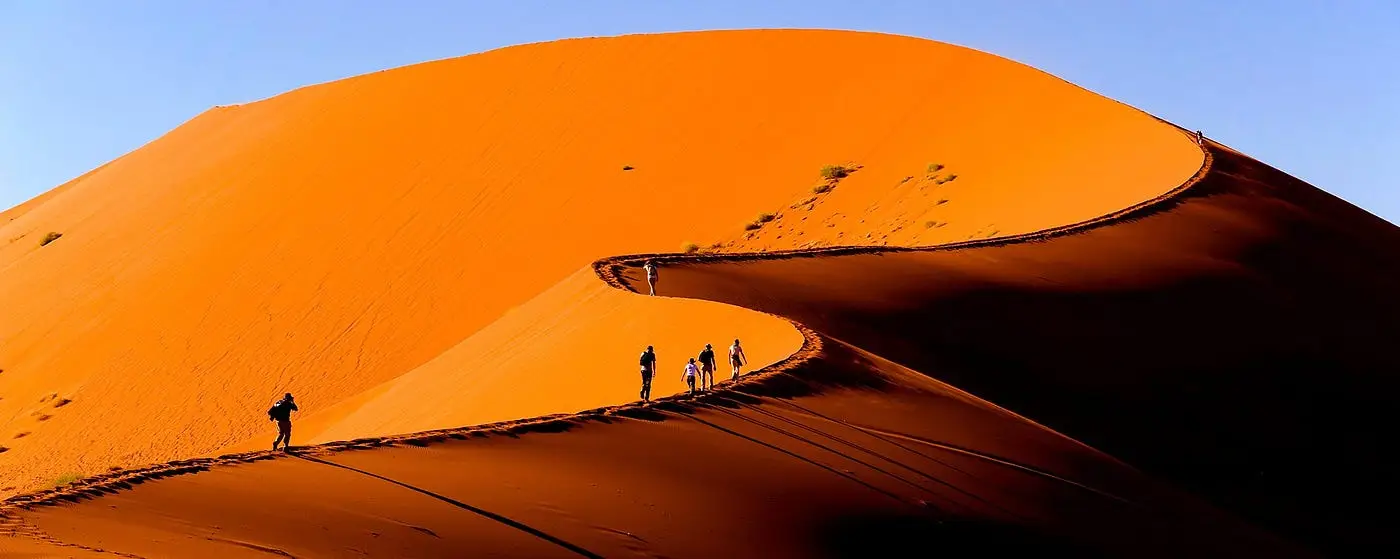
Sossusvlei, located in the heart of the Namib Desert, is a must-visit destination in Namibia. It is famous for its iconic red dunes, including the highest dune in the area, known as Big Daddy. Climbing the dunes of Sossusvlei is an exhilarating experience that offers breathtaking panoramic views of the desert landscape.
The Namib Desert, where Sossusvlei is located, is one of the oldest deserts in the world, and its vast expanse of red dunes is truly a sight to behold. The dunes are shaped by the wind, creating ever-changing patterns and formations. The orange-red color of the dunes is caused by iron oxide, giving them a striking and vibrant appearance.
One of the most popular activities in Sossusvlei is climbing Big Daddy, which stands at an impressive height of 325 meters. The climb can be challenging, but the reward is well worth the effort. From the top of the dune, you can enjoy sweeping views of the surrounding desert, with the contrasting colors of the red sand, blue sky, and distant mountain ranges creating a stunning contrast.
Sossusvlei is also home to Deadvlei, a clay pan surrounded by towering dunes. Deadvlei is famous for its dead acacia trees, which are believed to be over 900 years old. The stark contrast between the white clay, blackened trees, and red dunes creates a surreal and otherworldly atmosphere, making it a favorite spot for photographers.
2. Exploring the wildlife in Etosha National Park
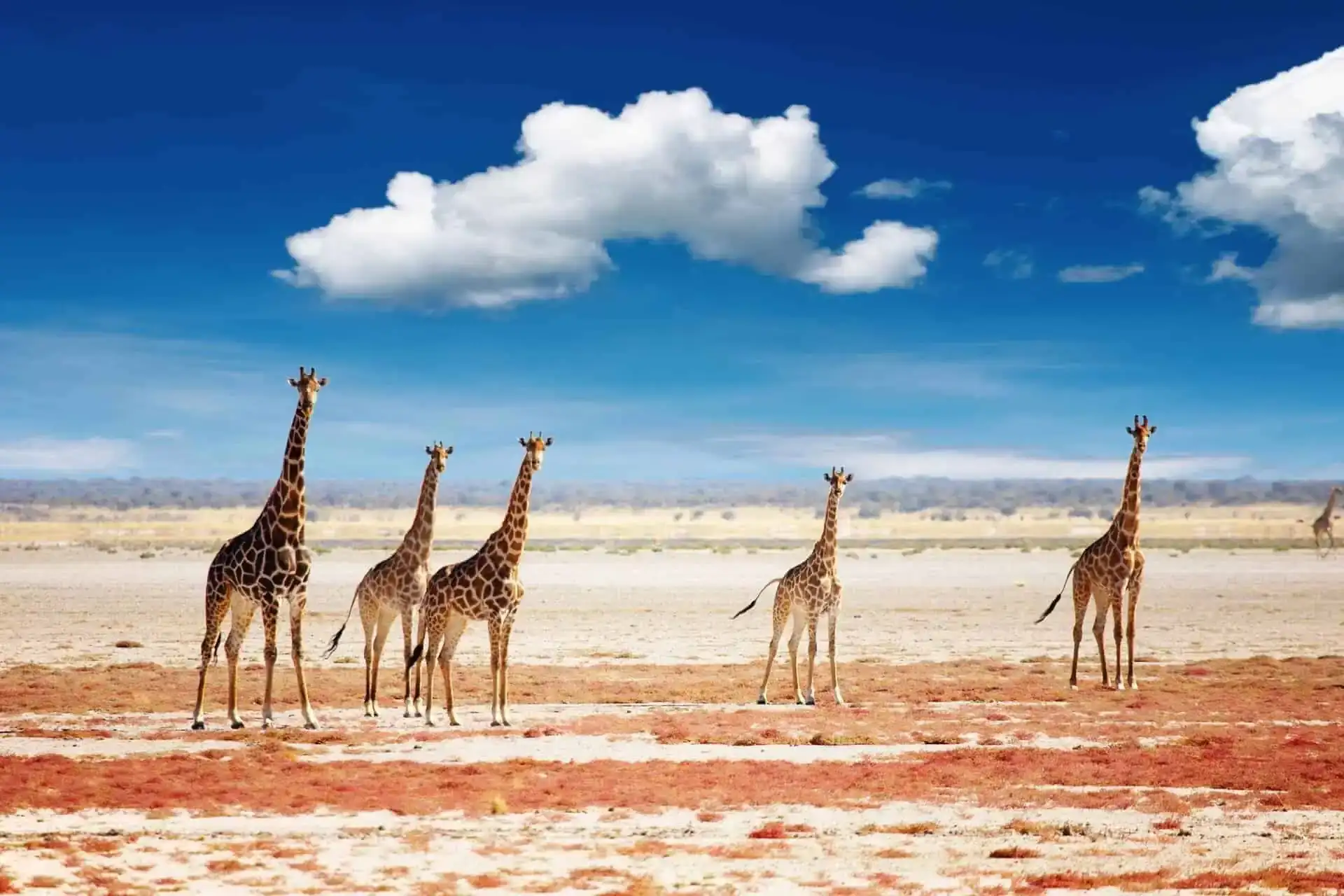
Etosha National Park, located in northern Namibia, is one of Africa’s premier wildlife destinations. Spanning an area of over 22,000 square kilometers, the park is home to a vast array of wildlife, including elephants, lions, rhinos, giraffes, zebras, and numerous bird species.
Exploring Etosha National Park offers an opportunity to witness these magnificent creatures in their natural habitat. One of the best ways to experience the park is through a game drive, where you can venture deep into the park’s diverse ecosystems. Keep your eyes peeled for wildlife sightings, as the park is known for its great concentration of animals.
One of the unique features of Etosha National Park is its network of waterholes, which attract a wide variety of wildlife, especially during the dry season. The park’s vast salt pan, known as the Etosha Pan, becomes a shimmering lake-like expanse after the rainy season, attracting large numbers of flamingos and other water birds.
Etosha National Park offers game drives both during the day and night, allowing visitors to witness different aspects of wildlife behavior. The park also has several well-equipped rest camps, where you can stay overnight and experience the park’s wildlife at close quarters. Many of these camps have watering holes, which are frequented by wildlife, providing incredible opportunities for wildlife viewing from the comfort of your accommodation.
3. Traversing the Skeleton Coast National Park
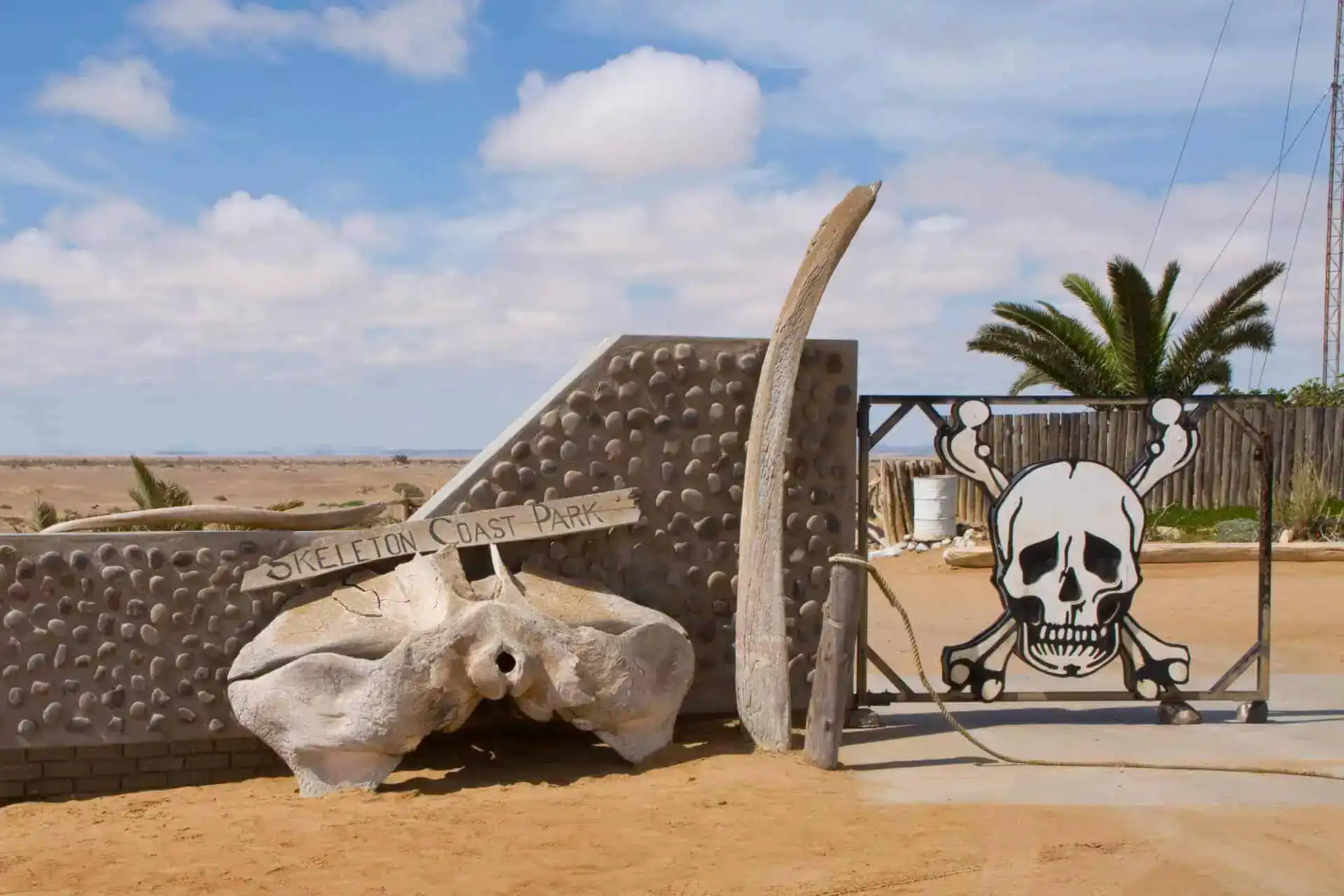
The Skeleton Coast National Park is a place of haunting beauty and dramatic landscapes. Stretching over 500 kilometers along Namibia’s northwest coast, it is known for its rugged and desolate scenery, sand dunes, and shipwrecks.
One of the highlights of the Skeleton Coast is Cape Cross, home to the largest cape fur seal colony in the world. Here, you can witness thousands of seals congregating on the beach, creating a cacophony of sounds and a truly remarkable sight. Cape Cross is an important breeding ground for these seals, and watching them in their natural habitat is a humbling experience.
The Skeleton Coast is also famous for its shipwrecks, which dot the coastline. These remnants of maritime disasters are a testament to the treacherous nature of the coast, with its strong currents, dense fog, and shifting sand dunes. Exploring the shipwrecks and imagining the stories behind them is a surreal experience, and many of them have become iconic landmarks of the Skeleton Coast.
To fully experience the beauty of the Skeleton Coast, it is recommended to take a guided tour or a self-drive safari. The park is remote and requires careful planning and preparation, as well as a permit to enter. It is also important to respect the fragile ecosystem of the coast and follow any regulations put in place to protect the wildlife and environment.
4. Unearthing the ghost town of Kolmanskop
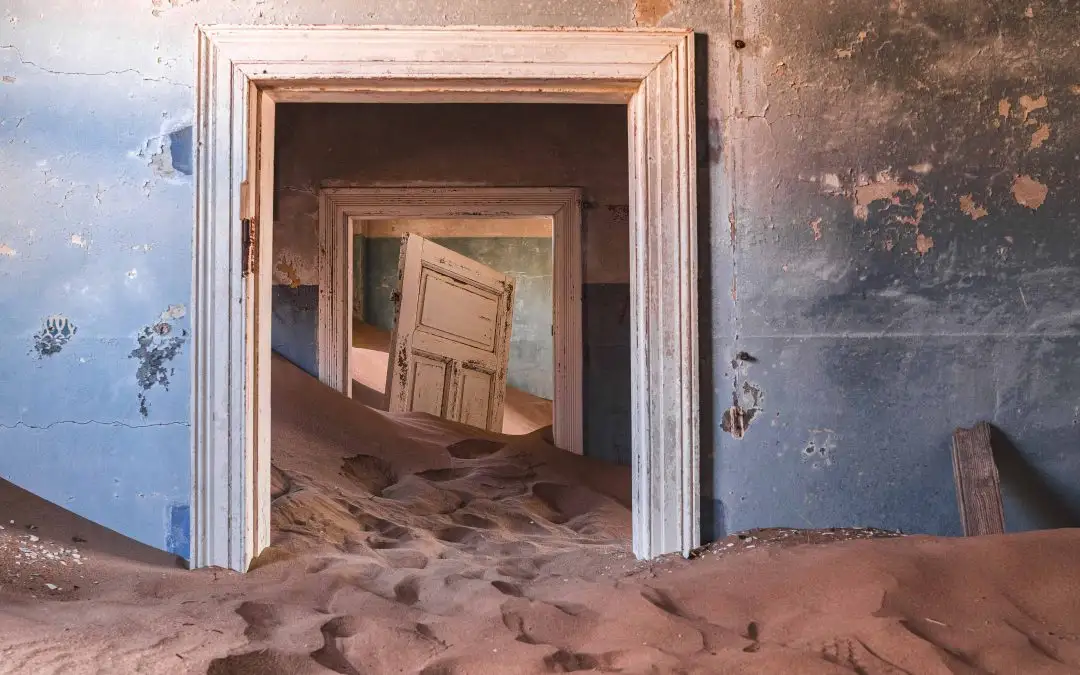
In the southern part of Namibia, lies the ghost town of Kolmanskop, a reminder of the town’s diamond mining heyday in the early 20th century. Once a bustling mining town, today it stands abandoned, with the desert slowly reclaiming the buildings.
Kolmanskop was established in the early 1900s when diamonds were discovered in the area. The town quickly became a prosperous center of diamond mining, attracting a diverse population of European settlers, miners, and prospectors. However, as diamond deposits depleted, people started to move away, leaving behind empty houses, hospitals, theaters, and even a bowling alley.
Visiting Kolmanskop is like stepping back in time, as you wander through the derelict buildings, dunes encroaching on their foundations, and see sand filling the once-grand rooms. The ghost town offers a glimpse into the past, showcasing the opulence and grandeur that once existed in this isolated desert town.
Take a guided tour of the ghost town, and learn about the history, legends, and stories of the people who once called this place home. Stand in awe of the magnificent architecture, the grand ballrooms, and the eerie emptiness that now pervades the town.
Kolmanskop is also a paradise for photographers, with the contrast of the decaying buildings, the ever-shifting dunes, and the vibrant blue sky creating a surreal and hauntingly beautiful backdrop. Capture the remnants of a bygone era, and see firsthand the relentless power of nature as it slowly reclaims the town.
5. Visiting the prehistoric Twyfelfontein Rock Art
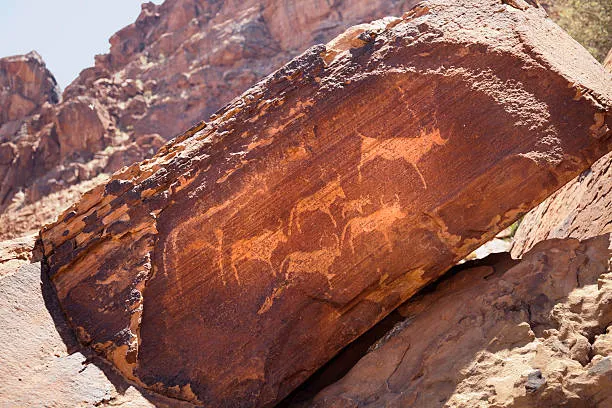
Twyfelfontein, a UNESCO World Heritage site, is located in the Kunene region of northwestern Namibia. It is known for its vast collection of prehistoric rock art, which provides valuable insights into the lives of early hunter-gatherer communities.
The rock art of Twyfelfontein dates back thousands of years and features thousands of petroglyphs and rock engravings, created by the San people. These engravings depict various animal and human figures, as well as symbols and abstract patterns.
Exploring the rock formations of Twyfelfontein is like walking through an open-air art gallery, where every rock tells a story. The site is home to one of the largest concentrations of rock art in Africa, and it offers a unique opportunity to delve into the rich cultural heritage of Namibia’s indigenous people.
Take a guided tour of Twyfelfontein to fully appreciate the significance of rock art and to gain insights into the beliefs, rituals, and daily lives of the San people. The guides are knowledgeable about the symbolism and cultural context of the engravings, and they can provide valuable insights into the rock art’s meaning and significance.
In addition to the rock art, Twyfelfontein is also known for its stunning rock formations, including the Organ Pipes, a series of vertical dolerite columns, and the Burnt Mountain, a striking red sandstone formation. These formations add to the dramatic landscape of Twyfelfontein, creating a surreal and otherworldly atmosphere.
6. Meeting the Himba Community
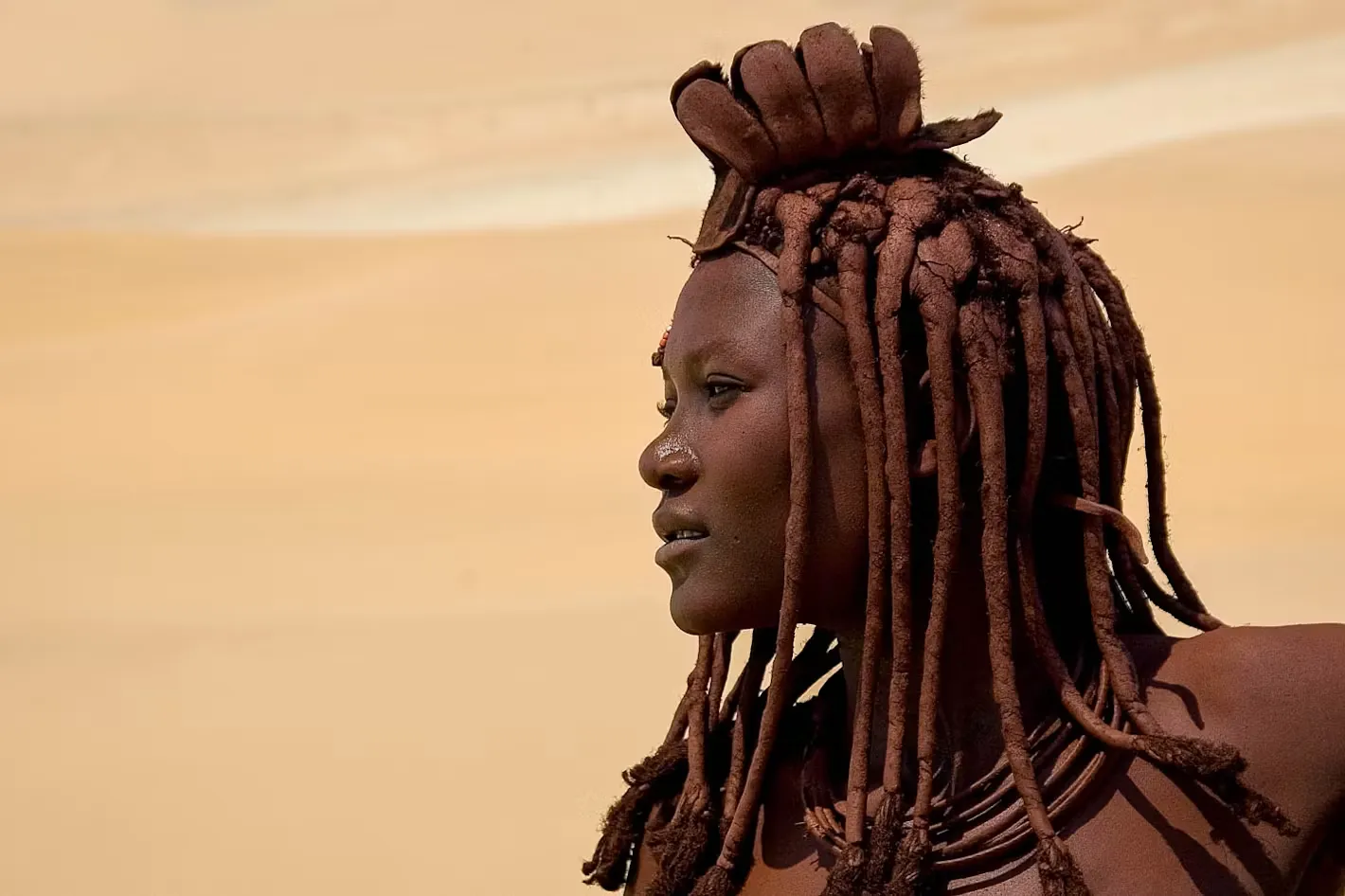
Traveling to northern Namibia offers a unique opportunity to meet the Himba people, one of the last traditional semi-nomadic groups in Africa. The Himba people, with their distinctive red clay-covered bodies and intricate hairstyles, have managed to preserve their ancient way of life despite the encroachment of modernization.
Meeting the Himba community is like stepping into a time capsule, as you witness their traditional customs, rituals, and daily activities. Spend time with the Himba people, and learn about their unique culture, beliefs, and traditions. Participate in traditional dances, observe the process of applying red ochre clay to the body, and try your hand at learning the Himba language.
A visit to a Himba village is a truly immersive cultural experience, where you can gain a deeper understanding of their way of life and the challenges they face in preserving their heritage. Interact with the villagers, ask questions, and respectfully engage with their customs and traditions.
It’s important to note that visiting the Himba community should be done with respect and sensitivity. The Himba people have successfully maintained their cultural identity and practices, and it is crucial to respect their privacy and way of life. Seek permission before taking photographs, and follow the guidance of local guides or community leaders to ensure a meaningful and respectful interaction.
7. Exploring the seaside city of Swakopmund
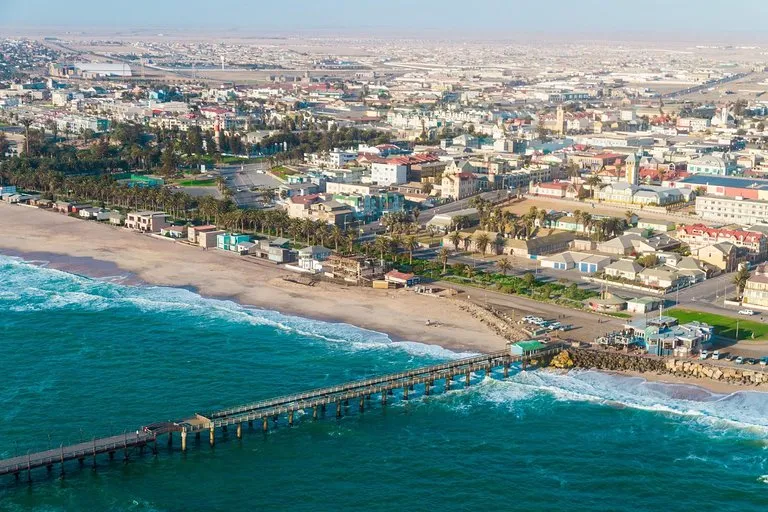
Exploring the seaside city of Swakopmund unveils the unique flora and fauna of the Namib Desert, including the iconic dunes of Sossusvlei and Deadvlei. A safari to see the Big Five at Etosha National Park is a must, along with learning about the Himba culture in Kaokoland.
The coastal town of Walvis Bay offers thrilling water-based activities, complemented by the prehistoric rock art at Twyfelfontein. This seaside city promises a diverse exploration, from desert wonders to cultural experiences, making it a great place for an enriching adventure.
8. Learning a few words of a click language

Experience the vast array of wildlife at Etosha National Park, where you can spot elephants, lions, and rhinos gathering at the watering holes. Explore the shipwrecks along the hauntingly beautiful Skeleton Coast, and immerse yourself in the rich traditions of the Himba people.
As the sun sets, climb Dune 45 for a breathtaking view, and don’t miss the opportunity to view seals and dolphins at Walvis Bay. Learning a few words of a click language with a local guide will add depth to your Namibian adventure, providing insights into the local culture and enhancing your travel experience.
9. Sandboarding down the world’s largest dunes
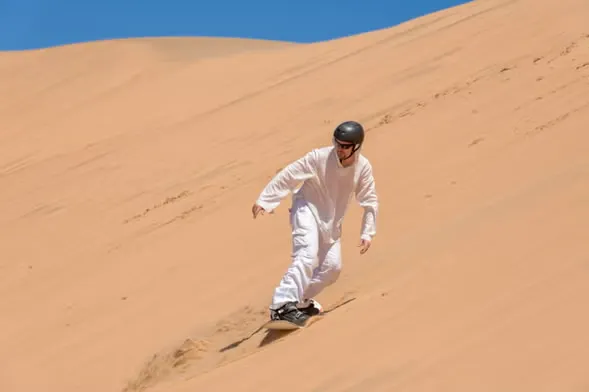
Sandboarding down the world’s largest dunes in Namibia is an exhilarating experience. Taking a thrilling ride down the towering dunes of the Namib Desert offers an adrenaline rush like no other. The dunes, including “Big Daddy,” provide the perfect terrain for sandboarding, catering to both beginners and experienced thrill-seekers.
An early morning start ensures the best experience, with the blue sky as your backdrop. The experience is enhanced with the option of a local guide who can provide valuable insights into the area’s history and geology, adding to the adventure.
10. Skydiving over the Namib Desert
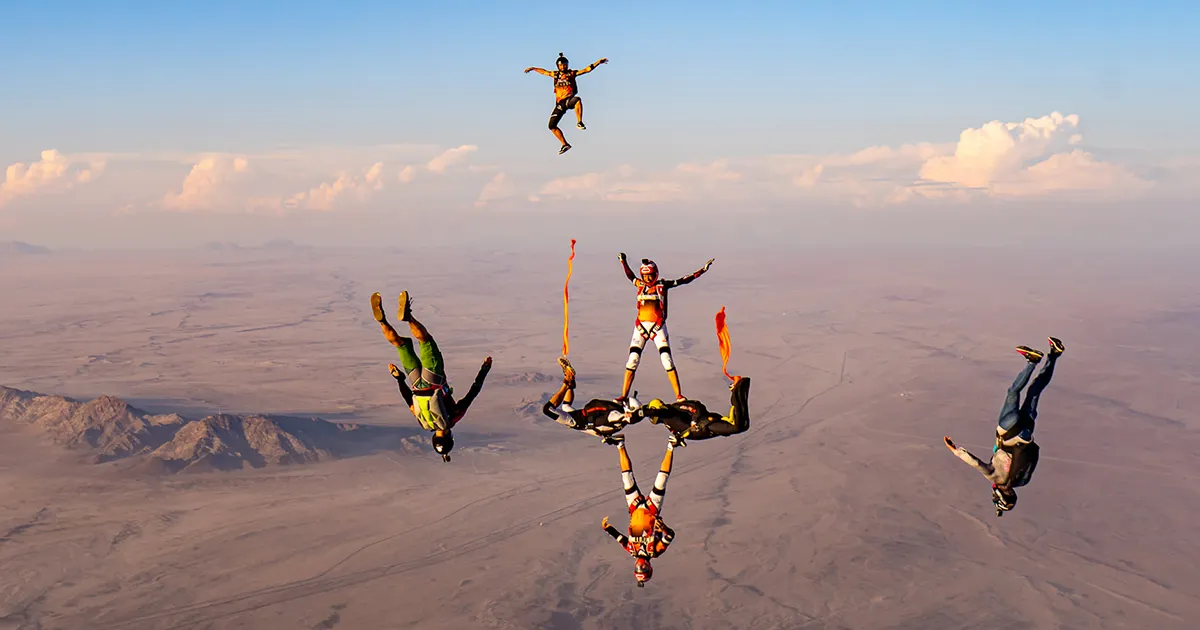
Elevate your adventure with a heart-pounding skydiving experience over the awe-inspiring Namib Desert. Soar through the boundless skies for a mesmerizing aerial perspective of the desert, embracing the adrenaline as you free-fall over the stunning landscape.
This thrilling activity offers the ultimate thrill and an unparalleled opportunity to experience the iconic Namib Desert from a unique vantage point. Whether you’re a seasoned skydiver or a first-timer, skydiving over the Namib Desert is an unforgettable way to immerse yourself in the grandeur of this remarkable natural landscape.
11. ATV rides over the dunes
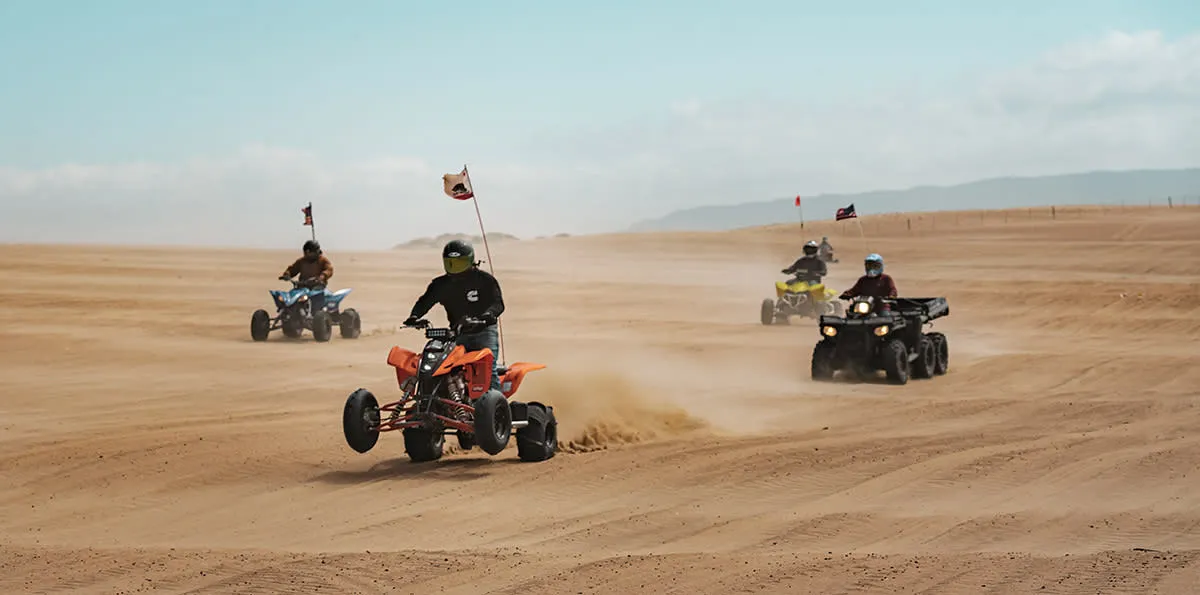
Embark on an exhilarating adventure riding ATVs over the mesmerizing dunes of Namibia. Navigate the undulating terrain as you feel the thrill of conquering the expansive desert landscape. Enjoy an adrenaline-fueled journey, immersing yourself in the exhilarating experience of ATV riding in the desert.
Traverse the majestic dunes and embrace the challenge of conquering the ever-changing landscape. Experience the vast array of wildlife and breathtaking views, making it one of the best things to do in Namibia.
12. Stargazing in the desert
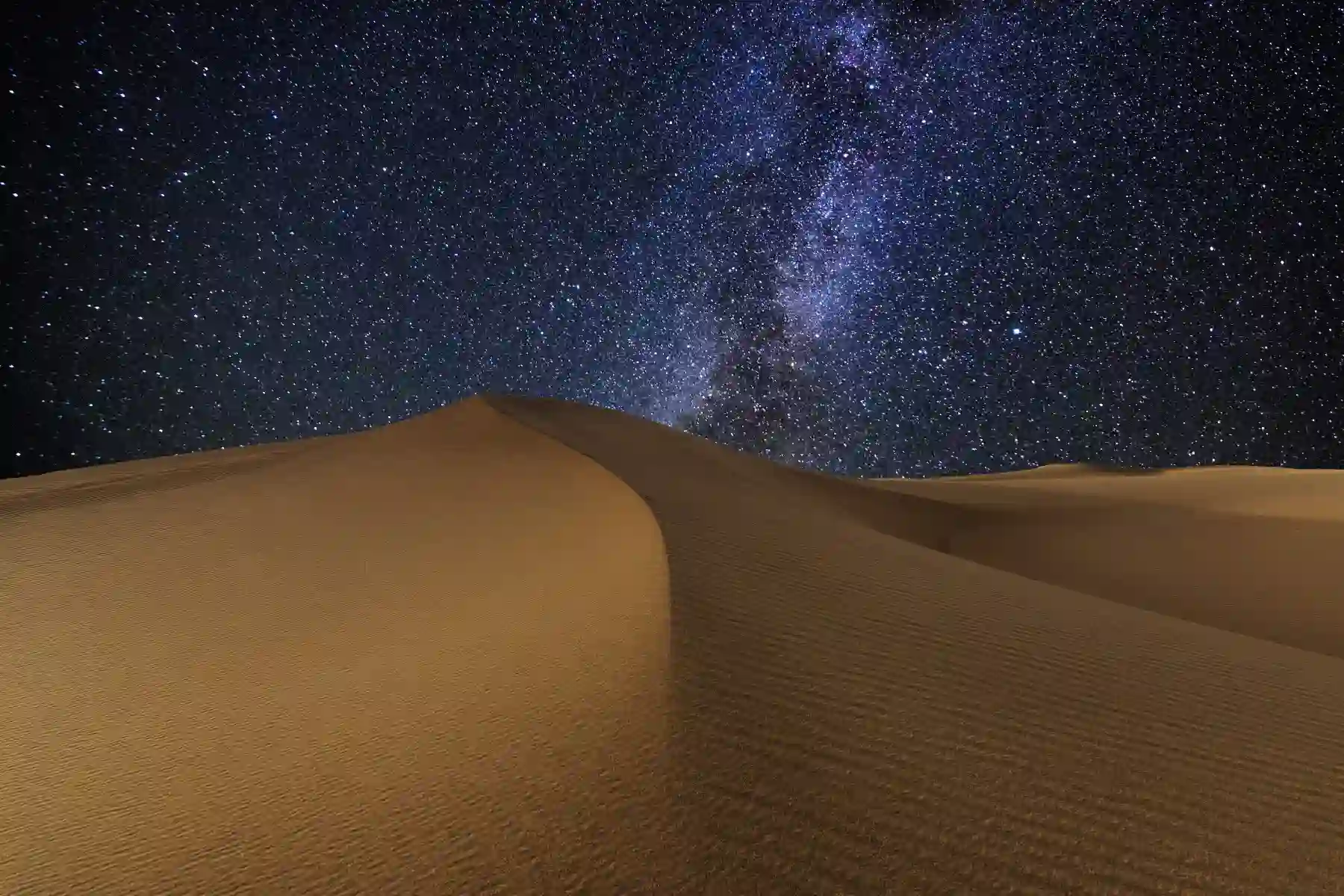
Experience the breathtaking beauty of Namibia by indulging in stargazing amidst the captivating desert landscape. Discover the wonders of the night sky as you gaze upon a blanket of stars, untouched by light pollution. Explore the southern Namibia region for the perfect stargazing experience.
Visit the Namibrand Nature Reserve, renowned for its pristine night skies, or head to the Waterberg Plateau, offering an ideal setting for observing celestial bodies. Immerse yourself in the magic of stargazing with a local guide who can enhance your experience with fascinating insights into the cosmos.
13. Checking out the classic cars left in the desert
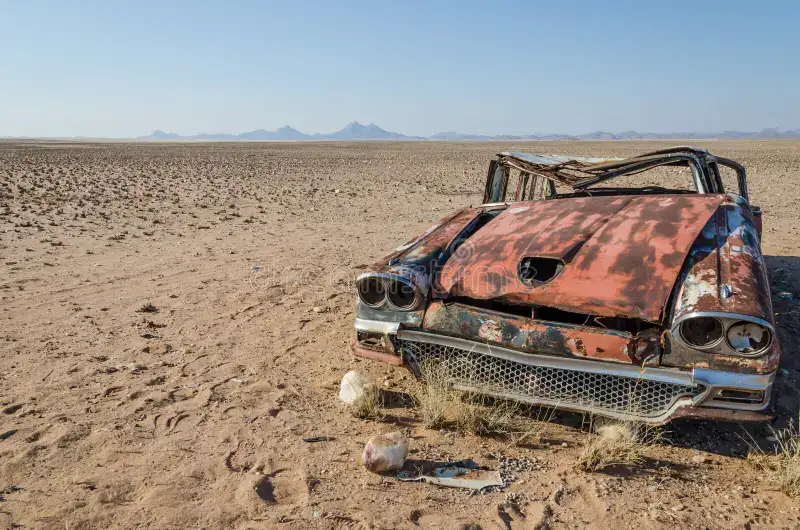
Amidst the desert landscape, one can explore intriguing remnants of classic cars left behind. The vintage automobiles, weathered by time, exude a mysterious charm that captivates visitors.
Encountering these abandoned classic cars amidst the vast desert scenery provides a unique blend of nature and history. It’s a fascinating allure that showcases the passage of time and the enduring spirit of these vehicles.
The sight of these vintage cars scattered across the desert offers a glimpse into the past, blending seamlessly with the serene desert environment.
14. Tracking desert-adapted wildlife
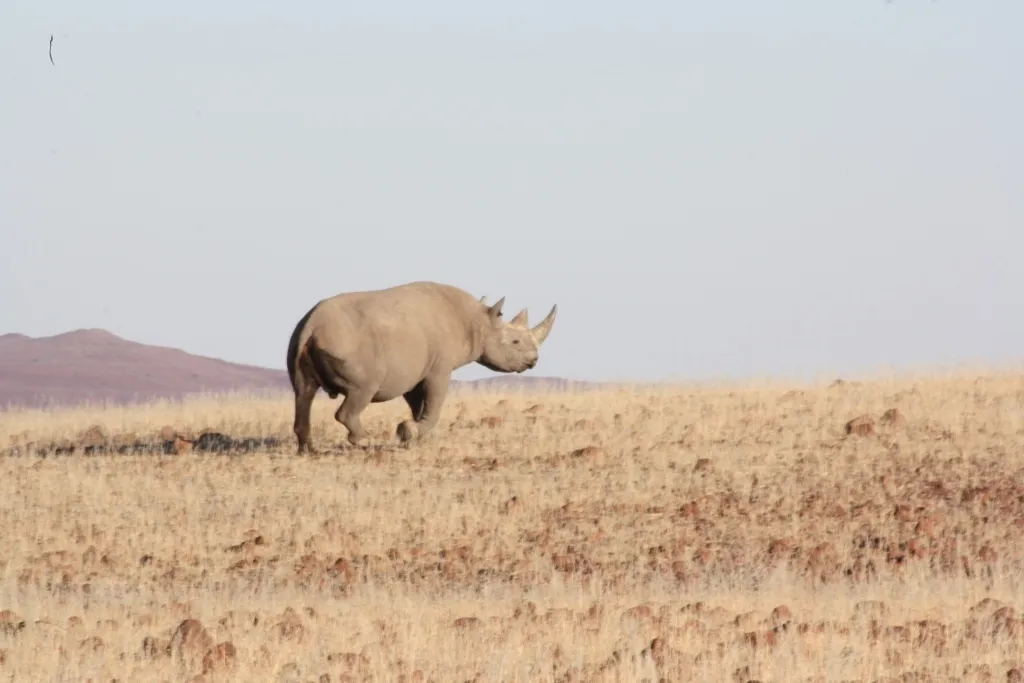
Embark on an enthralling expedition to track wildlife in the desert’s unique ecosystem, where remarkable adaptations enable species to thrive. Witness the resilience of desert-adapted wildlife as you observe their movements, immersing yourself in the captivating quest to understand their survival strategies perfectly suited to arid environments.
Engage in a rewarding experience that offers insight into the desert’s wildlife, revealing the intricate balance and captivating adaptations that allow these species to flourish in such harsh conditions.
Frequently Asked Questions
What are some must-see destinations in Namibia?
Discover the must-see destinations in Namibia. Explore Sossusvlei and Deadvlei’s stunning red dunes, witness a variety of wildlife at Etosha National Park, marvel at the largest canyon in Africa – Fish River Canyon, experience the rugged beauty of Skeleton Coast and immerse yourself in the charm of Swakopmund’s German colonial architecture.
What are some outdoor activities that are popular in Namibia?
Outdoor activities are popular in Namibia due to its stunning landscapes and wildlife. Explore the wildlife up close on safari tours and enjoy breathtaking views while hiking in places like Fish River Canyon and Spitzkoppe. For a thrilling experience, try dune boarding or sandboarding on the expansive dunes of Sossusvlei.
How can I experience Namibia’s wildlife and natural beauty while being environmentally conscious?
Experience Namibia’s wildlife and natural beauty in an environmentally conscious way by choosing eco-friendly accommodations, opting for guided tours with certified guides, visiting national parks with conservation policies, and supporting local conservation efforts.
What are some cultural experiences that visitors to Namibia should not miss out on?
Some cultural experiences that visitors to Namibia should not miss out on include visiting the Himba people, known for their unique customs and appearance. Attend a traditional Damara singing and dancing performance, explore the San Bushmen’s culture, and visit a local market to experience Namibia’s diverse cuisine and handicrafts.
Conclusion
Namibia offers a plethora of unique experiences that cater to every traveler’s interests. From climbing the highest dune in Sossusvlei to exploring the wildlife in Etosha National Park, there is something for everyone.
Traversing the Skeleton Coast National Park and unearthing the ghost town of Kolmanskop provide an opportunity to witness Namibia’s intriguing history. Additionally, visiting the prehistoric Twyfelfontein Rock Art and meeting the Himba Community offers a glimpse into the rich cultural heritage of the country.
Outdoor enthusiasts can indulge in sandboarding down the world’s largest dunes and skydiving over the Namib Desert. Stargazing in the desert and checking out the classic cars left behind in the desert are experiences that shouldn’t be missed. With so much to offer, Namibia is truly a destination that will leave you in awe. Have you been to Namibia? Comment below and share your favorite experiences!
Related Posts:
Top 10 Ancient Egypt Cities To Explore Right Now
Top 10 African Islands to Visit in 2024
Top 12 Quiet Holiday Destinations in South Africa

Ferona Jose is a passionate travel writer and blogger at Travelistia. She has traveled throughout Europe, Asia and the Americas. Her writing focuses on cheap travel destinations, travel experiences, cultural insights, and travel hacks.

